7 Sand Mining Communities, 3 States, 5 Months – Part 1
An Exploration of Sand Mining Impacts: Lasalle County, IL by way of Chicago’s South Side
By Ted Auch, Great Lakes Program Coordinator
When it comes to high-volume hydraulic fracturing (HVHF), frac sand mining may be the most neglected aspect of the industry’s footprint. (HVHF demand on a per-well basis is increasing by 8% per year.)
To capture how this industry is changing several sand mining communities, I recently took a road trip to visit, photograph, and listen to the residents of this country’s primary frac sand areas. In total, I visited 7 sand mining communities in Illinois, Indiana, and Michigan.
This multimedia perspective is part of our ongoing effort to map and quantify the effects of silica sand mining on people, agriculture, wildlife, ecosystem services, and watersheds more broadly. Below is my attempt to give the FracTracker community a sense of what residents are hearing, seeing, and saying about the silica sand mining industry writ large.
Chicago’s South Side
Before heading to Illinois’ frac sand epicenter of Lasalle County, I couldn’t help but catch the South Shore Line out of Millennium Station. This station can be seen as you head south to the Hegewisch neighborhood on Chicago’s impoverished South Side, an area of greater Chicago-Gary, Indiana that has largely been forgotten by politicians in both states. ![]()
Figure 1. Average income per capita and Hardship Index (0-100 with 100 being the worst) for Chicago’s neighborhoods with Hegewisch highlighted in the city’s southeast corner.
This situation is a shame because collectively Hegewisch and the city of Whiting, IN are home to one of the largest – and getting larger – collections of oil refineries and oil sands infrastructure in the United States.
For an estimation of how difficult it is to live in various Chicago neighborhoods, see Figure 1, left.
This proliferation has not been without its dangers, including a compressor station explosion at BP PLC’s massive1 Whiting Refinery in August 2014. Unfortunately, that incident was just the latest in a long line of mishaps at this facility. The “operational incident,” as BP called it, rocked already stressed neighborhoods like MarkTown, IN – the aborted company town planned for steel maker Clayton Mark. MarkTown is on the National Register of Historic Places and is an example of a community that is being erased from the face of the earth in the name of Hydrocarbon Industrial Complex expansion. For those interested in architecture preservation, MarkTown’s rapid erasure is being conducted by BP itself and in the process we are losing an example of Conservatively Radical architect Howard Van Doren Shaw’s distinct English-style Tudor homes and urban planning. Residents speculate BP “may be buying up the properties because of concerns about liability.” The company counters they are just trying to create additional green space for residents.
![]()
Figure 2. Average daily oil refinery production per day across North America’s 152 Oil Refineries along with North American ports.
Luckily for everyone, operations following the aforementioned recent explosion were only “minimally impacted as a result of the incident and the refinery continue[d] to produce products for customers.” However, the more chronic concern is the tight supply-demand relationship between BP’s refinery and their Koch KCBX neighbor. Koch has made repeated headlines – and many neighbors turned enemies including the Southeast Environmental Task Force and its fearless leader Peggy Salazar – with its handling of the refinery’s annual production of 600,000 tons of petcoke a development Chicago Magazine called Mountains of Trouble. Petcoke is a byproduct of the refinery’s increased acceptance and processing of tar sands from Alberta Canada. Levels of production are likely to increase given BP’s completion in November 2014 of a “$4-billion revamp…to boost its intake of Canadian crude oil from 85,000 bpd to 350,000 bpd.”
Given how interconnected the hydrocarbon industry is, I thought it would be worth collecting some photos of the aforementioned infrastructure. When I saw that Koch KCBX’s terminal was also storing large amounts of silica sand, however, the connection between my next target(s) in LaSalle County was made even more obvious.
LaSalle vs. Chicagoland: A Tale of Two Worlds
Lasalle County, Illinois is situated approximately 50-60 miles south-southwest of Chicago. When you try to compare demographics and commerce, however, it is worlds away.
Chicagoland encompasses nearly 10,900 square miles – 9.5 times the area of Lasalle County. While Chicago’s population is expanding by 95,681 people per year, LaSalle’s is shrinking by 2,734 per year (Table 1). Chicagoans, though not South Siders, are making more than two times that of LaSalle County residents (with the latter actually falling nearly $4,700 below the state average). Predictably the demographics of Chicago reflect more and more those of the US, while LaSalle is typical of rural America with a population that is 93% white and only 3.3% foreign born. Thirty-five percent of Chicagoans are likely to achieve a bachelor’s degree, while only 16% of LaSalle County residents are likely to do so. Rates of poverty and more specifically child poverty, on the other hand, are significantly higher in Chicago. Finally, LaSalle is one of the country’s preeminent farming counties; it ranks #4 in the state and #126 nationally thanks to the value of agricultural commodities produced amounting to $448.5 million net of farm subsidies. See Table 1.
|
Table 1. Chicagoland and LaSalle County, Illinois summary demographics, economic prosperity, and agricultural productivity. |
Photos from the Tour
The above contrast was made crystal clear as I traveled down Interstate 80 westbound towards exit 90 and LaSalle’s County seat Ottawa (pop. 18,562). Upon arriving in Ottawa I drove west on Madison Street to the first target of our expedition: U.S. Silica Company’s mine and processing facility at the corner of Madison Boyce Memorial Drive. Upon arriving, however, it became clear that I would not find a suitable location to photograph the company’s mine; the perimeter had been fenced off and mounded up to the tune of 10-15 feet. So I got back in our rental car and drove to the mine’s southern perimeter adjacent to the Bear Den Bar and Grill and the Vine St.-Fern St.-15th Ave. neighborhood where there was clear line of site. It was here that I got some of the best photos of the mine’s scale and scope with respect to land-use, reclamation, and hydrology.
![]()
Below is a sample of some of those images as well as several I took further down Route 34 between U.S. Silica’s active mine and a “reclaimed” Ottawa Silica Co. mine on the banks of the Illinois River.
After snapping several hundred shots of these two mines I headed to the I & M Canal State Trail between Utica and Ottawa emanating out of Buffalo Rock State Park and hiked east towards the Northern edge of U.S. Silica’s mine alongside a CSX railroad and recently constructed spur feeding into the mine’s loading terminal. The hope was that I would get a closer look at the mine but it turned out the angle was different but not better.
From the back of U.S. Silica’s Ottawa mine I traveled approximately 7 miles west to Unimin’s North Utica mine and a short dirt road off of 2803rd Road on the northern edge of the mine.
![]()
It was here that I photographed the mine’s reclamation plots, active mine pits, and developing water transport mechanisms. However, more importantly it was from here that I noticed off in the distance a bright red silica sand grain-size separator.
Curiously I did not – but do now – have this nascent and relatively small mine posted on our Frac Sands Mines and Related Facilities map at the time. Upon arriving at this site I found that the mine was owned and operated by a company called Northern White Sand a small mom & pop operation out of Utica, IL.
![]()
The photos I took of this mine were primarily from atop a vegetated berm to the southwest of the mine’s primary footprint. This vantage point allowed us to get some great shots of the types of infrastructure/equipment typical of this sized mine including the aforementioned modular grain-size separator, conveyor belts, retention ponds, and the pyramid-like piles of powdery white silica sand so desired by the HVHF industry.
Our final stop on the LaSalle County silica sand mine tour landed us in Troy Grove 13 miles north of North Utica by way of Interstate 39. It was here that I visited several vantage points around Technisand’s MBI Manley Bros. silica mine. The expanse included the site’s mixture of old and new processing infrastructure, what appeared to be an alluvial fan derived from sand waste and associated wetland, and the mine’s far reaches alongside a Chicago and North Western Transportation Company (CNW) railroad.
Resident Testimonials
So now that I have outlined my tour of La Salle County I thought it would be helpful to share some of the stories residents told me during my travels and later by way of email.
Anna Mattes – La Salle County, IL
I live in LaSalle County, Illinois where I have prime farmland and Starved Rock State Park… the crown jewel of Illinois. I already have a fine farming industry and plenty of tourism as Starved Rock is visited by two million people annually. LaSalle County already has forty two quarries, gravel pits and sand mines. If I allow anymore the county will look as though it has been bombed. Empty sand pits will never produce food ever again. No amount of reclamation will restore this land to be productive…Each mine uses one million gallons of water daily. The LaSalle County Board has enlisted the USGS to do a hydrology study to determine how much water I have in our aquifer for municipalities and farming. Presently I have a moratorium in place on sand mines thru July 2016 and I hope forever. As a woman, wife and mother I am charged with the continuity of life. It is my job, profession, to raise healthy children, make a healthy breakfast and pack a nutritious lunch for my husband so he can do his job, and it generally falls to women to care for the elderly in families. With out clean air, pure water, healthy food what is the quality of life? Fracking is a dangerous business and I need to take better care of Planet Earth. Please do your part, I’m a Master Gardener and I’m doing my part.
Thomas Skomski – Wedron, IL
I am a resident of Wedron who has been severely impacted by Wedron Silica; and I want to report that there are many more problems associated with the influx of sand mines in LaSalle Co. than named in your recent article. In order to be fair to other residents who will be negatively affected by proximity to any sand mine I believe it is important to inform them and all concerned on the unmentioned problems associated with living near a sand mine. For example: the mountains of sand that are produced migrate everywhere the wind takes the particles. As I all know the winds are frequently fierce in this part of the country. One neighbor describes how in the morning when he sets his coffee cup down on his front porch and goes into his house to get the newspaper that he returns to find a layer of white sand covering his coffee. Another neighbor vacuums the sand off her living room rugs weekly while her husband regularly has to clean out sand-filled gutters. I do know that enabling pollutants on private property is technically criminal trespass. At the last EPA hearing in Wedron a retired mine employee admitted that Wedron Silica uses 100 million gallons of water per hour in sand processing. Some of this water is recycled. Since I have not confirmed those statistics, I prefer sticking to the fact that the mine has reversed the flow of the ground water. Who knows what the unseen consequences of that reversal might be? The toxic plume that Wedron Silica is in part responsible for creating migrates wherever the ground water moves. As a result of the threat of my well being poisoned my land, 23 acres has been devalued by the county to $1.00. All my five buildings are worth 40% of what they were before nine wells were poisoned in Wedron. Those wells were so toxic with benzene that water came out of the faucet orange and you could not breath it let alone use it to wash anything. Wedron Silica has begun buying homes in Wedron which will allow them to pursue their wealth with no concerns- BUT what about the water which I all know is in limited supply and susceptible to being polluted? So in summary, please include the human costs involved in a mine opening near you. My wife and I moved to the country to enjoy the solitude and quiet of living on a farm in our retirement years. The quality of our lives has been diminished, in addition the noise is disturbing; trains come in at all hours incessantly blowing their horns and the semi traffic is constant. Finally, I have heard a lot of what I consider negative criticism about the EPA. Having experienced this monumental problem directly it is perfectly clear to me that without the resources of a pro-environment organization I would be hard pressed to stand up to a corporation with multi billions in assets.
Ashley Williams – LaSalle County, IL
The nickname the “Silica Sand Capital of the World” has quickly transformed into a curse rather than a blessing for the citizens of LaSalle County, IL. Here, the frac sand industry continues to proliferate, endangering the health and safety of the people and local environment. Our precious life vessels: our air, water, and soil are under siege by a nexus of power that seeks to intimidate us into quiet submission, but I’ll be damned if I’m going to sit by and let that happen.
Footnote
- This facility alone processes nearly 2% of all oil in North America on a daily basis. This facility is the seventh-largest refinery in the United States and the largest outside of the Gulf Coast.
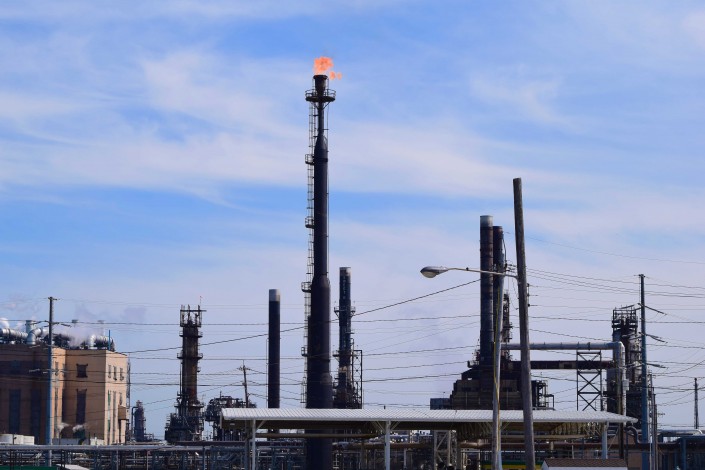
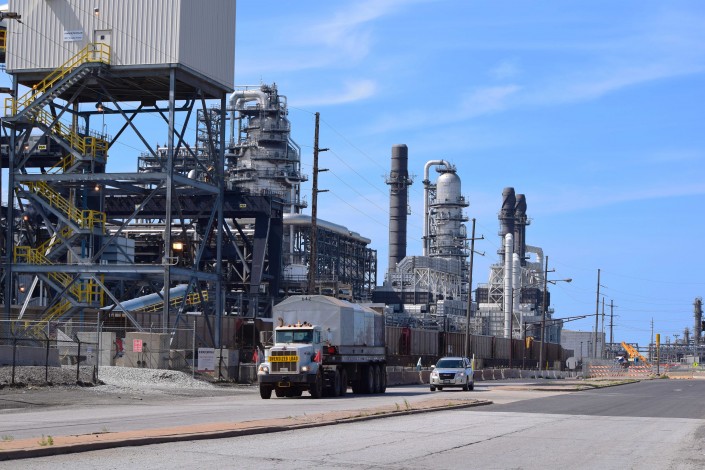
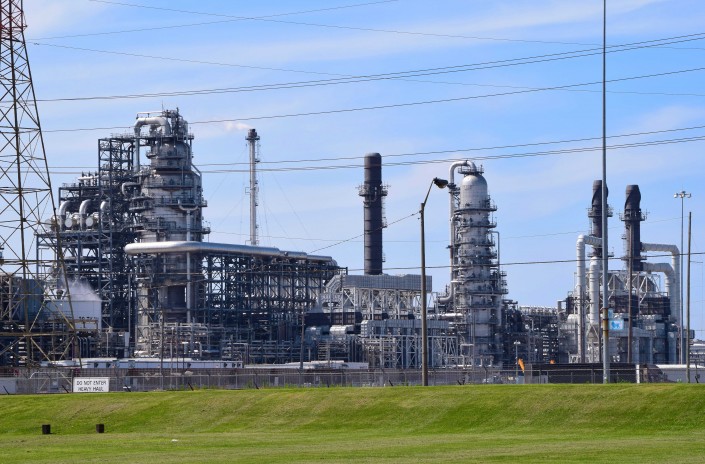
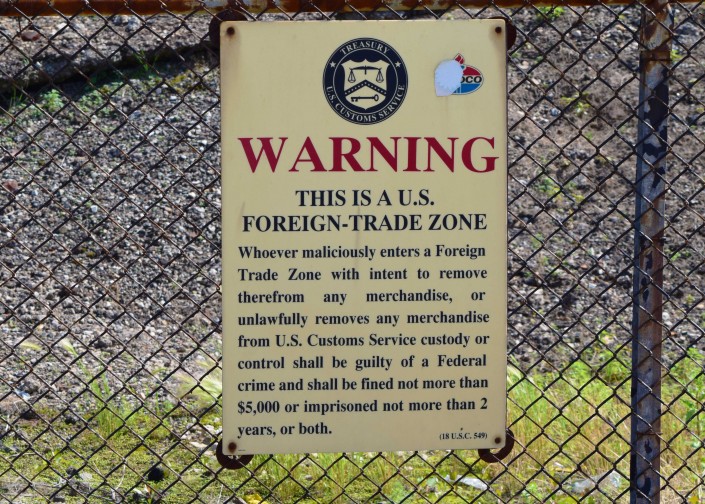
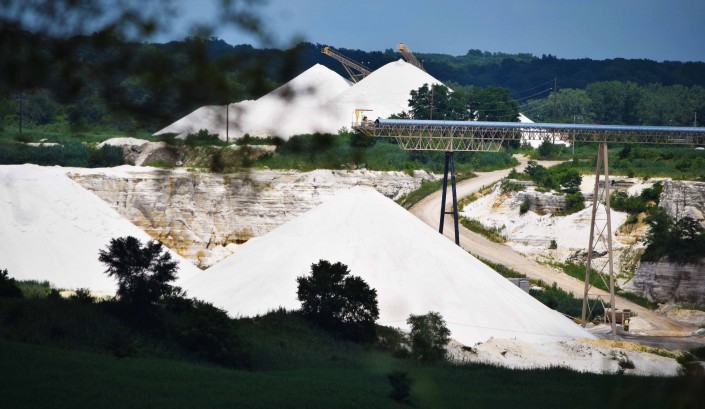
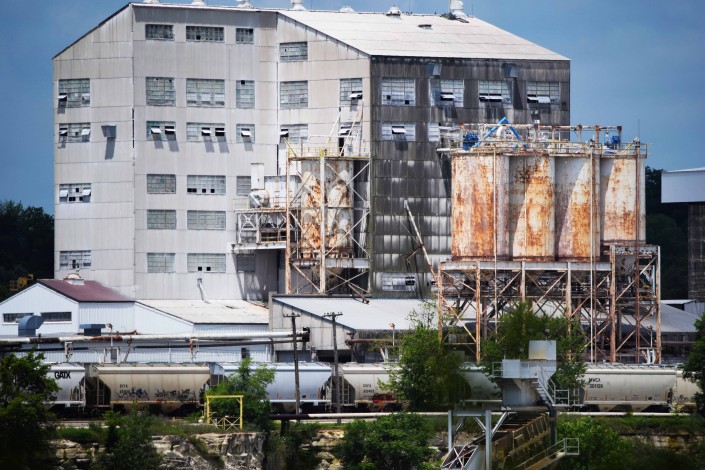
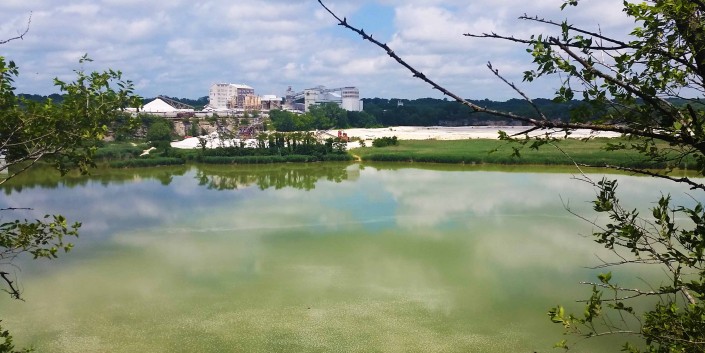
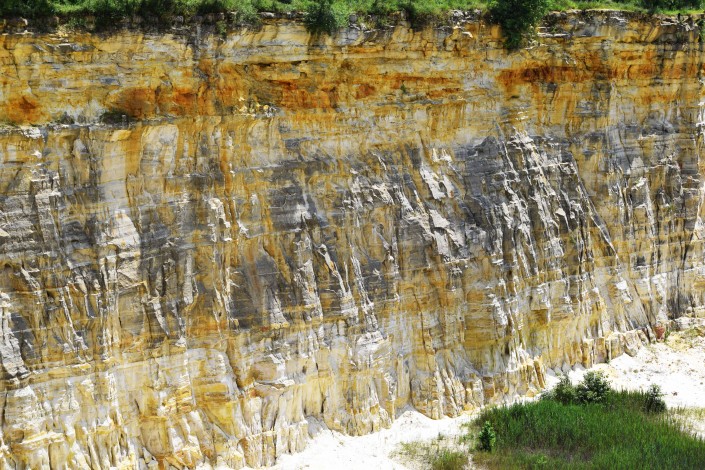
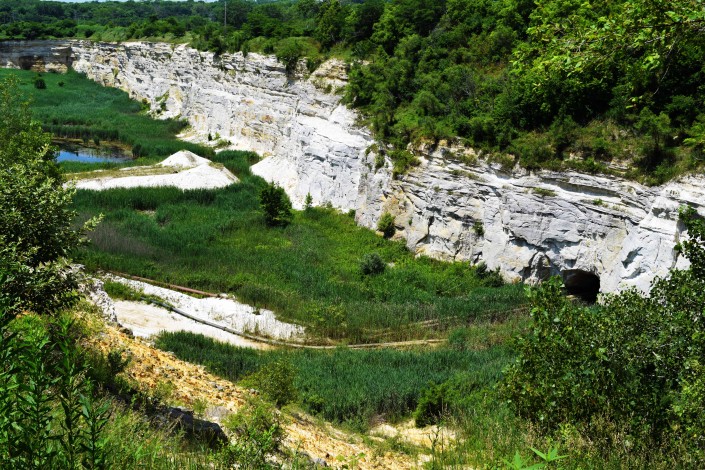
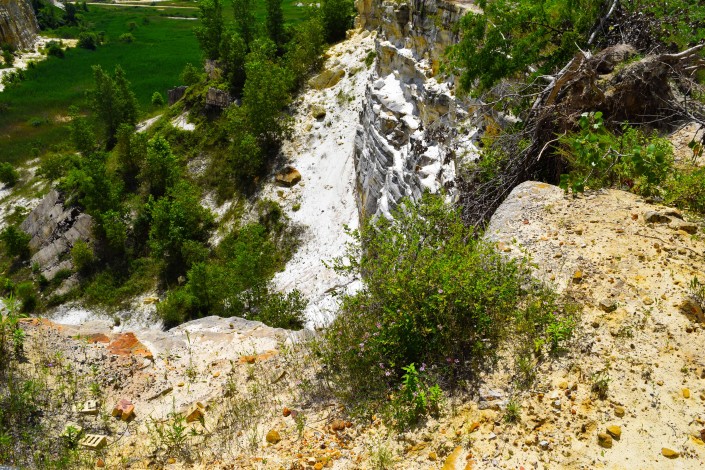
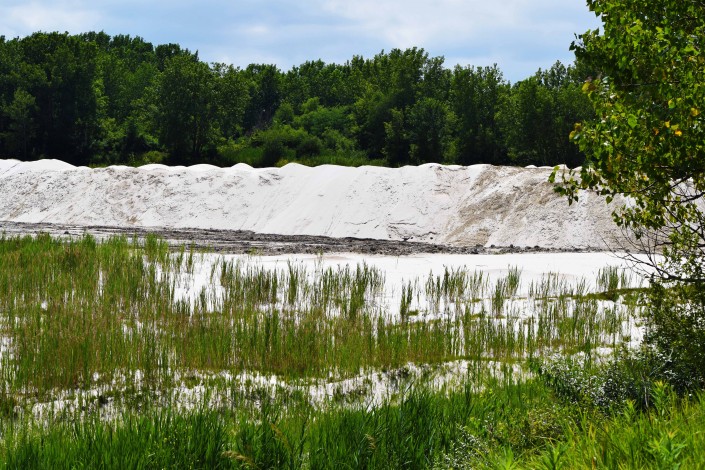
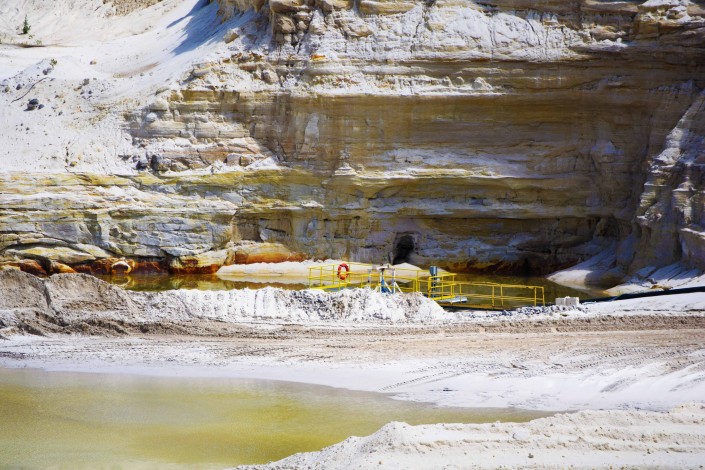
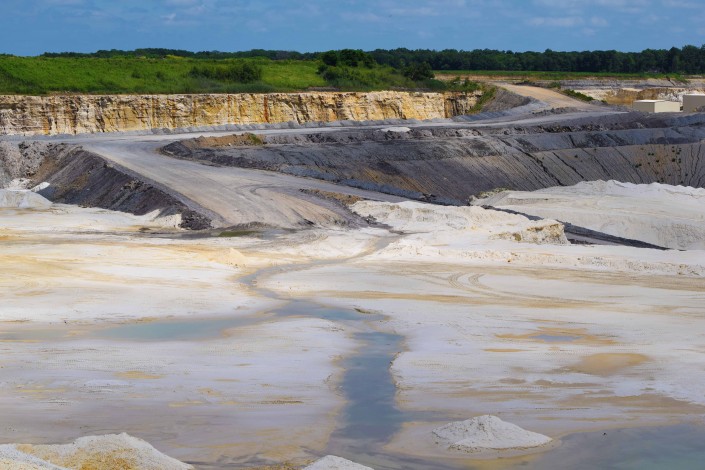
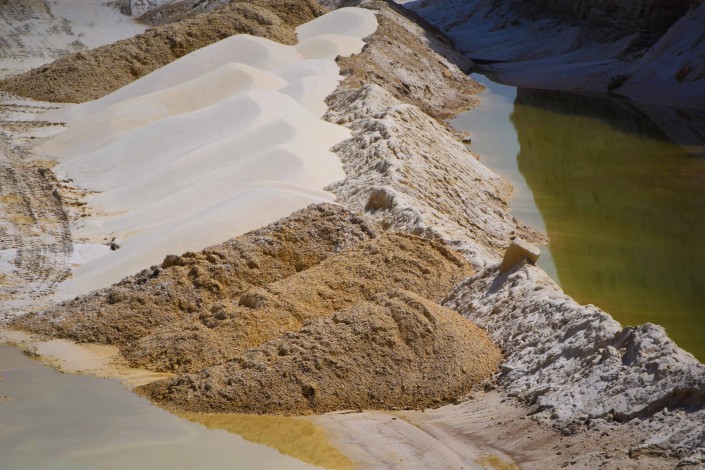
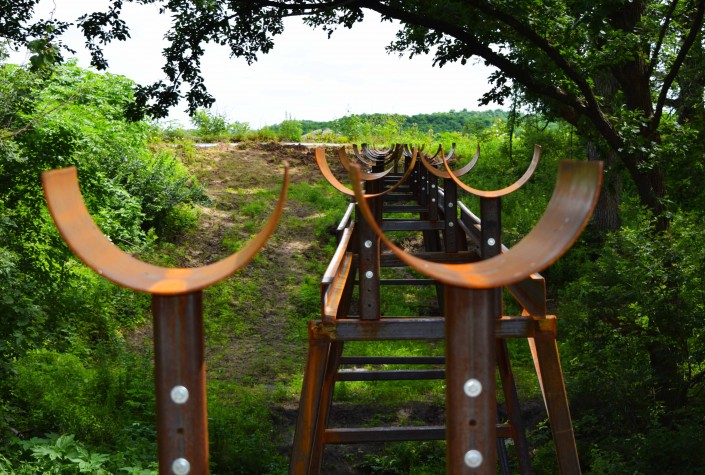
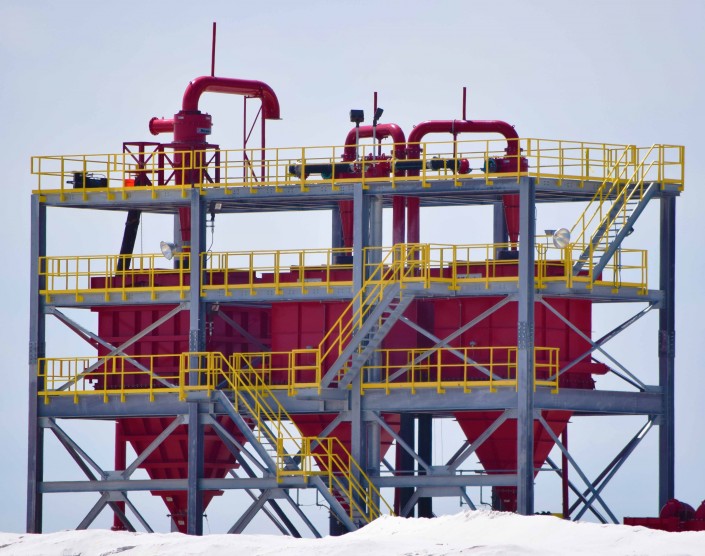
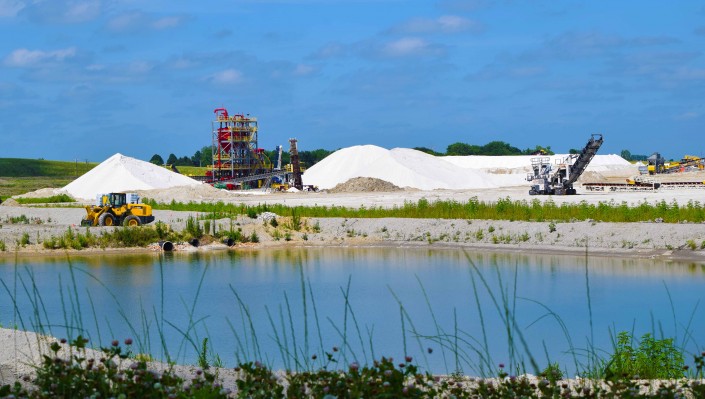
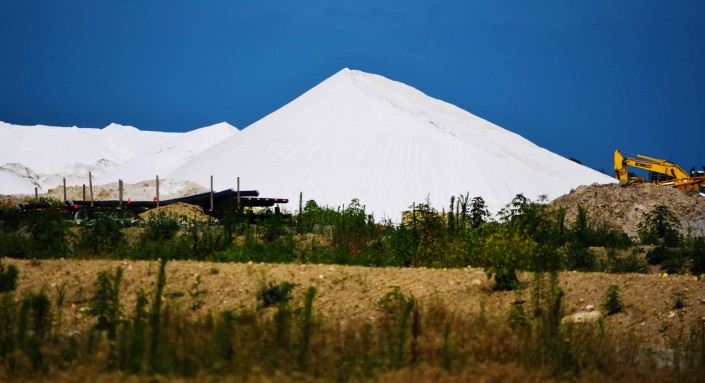
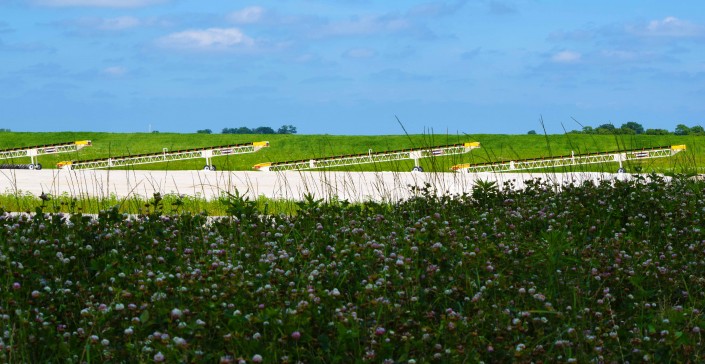
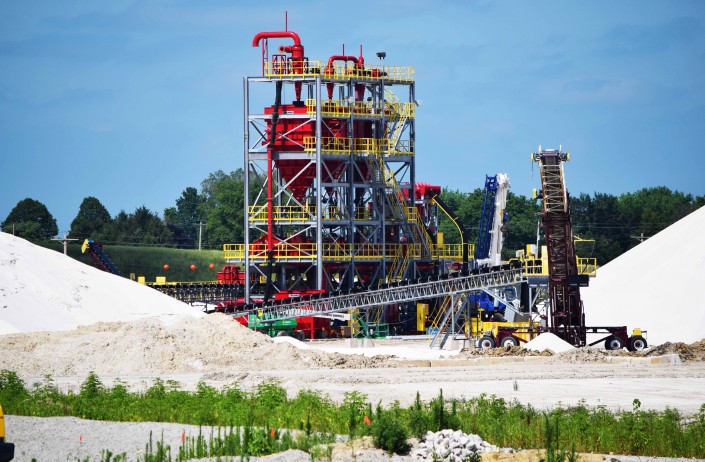

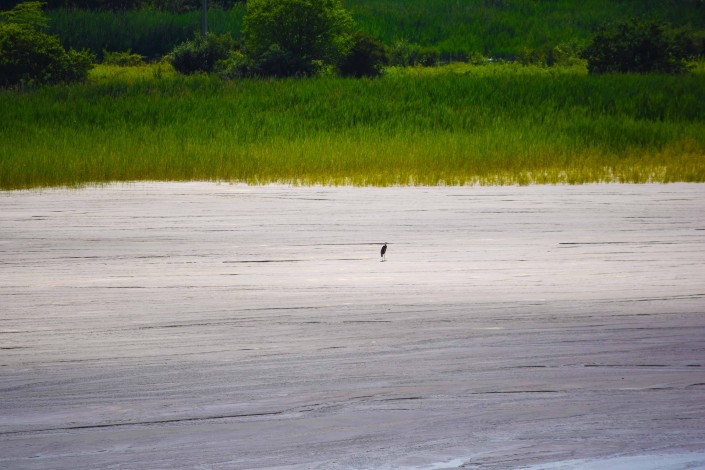
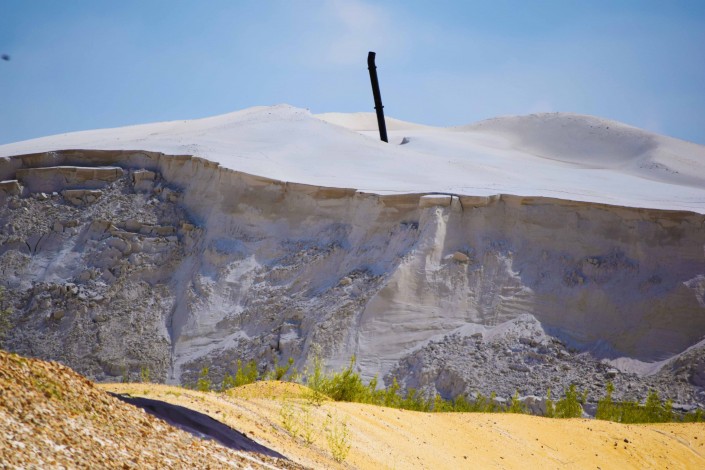
Very amazing Article about air quality thanks for sharing this stuff i liked it and will use this useful information for my research papers
The earliest clear reference I can find to Wedron Silica dates from 1928 so I don’t think the fact that there’s a sandpit in Wedron much of a surprise to “folks who lived in the peaceful wooded bluffside country homes right across the road.” I particularly enjoyed the guy complaining about the noisy trains; the line’s been there since at least 1870, the date chiseled on the bridge over Stadden’s Run, the next creek south. (Since benzene is colorless, the orange color in his water was probably due to ferric oxide. Our water in nearby Dayton had 18ppm in the mid-60’s.) There is considerable dispute over whether extremely fine silica sand can cause lung cancer: Gamble JF. Crystalline silica and lung cancer: a critical review of the occupational epidemiology literature of exposure-response studies testing this hypothesis. Crit Rev Toxicol 2011;41(5):404–465.
I have no idea how long you have worked for Fairmont minerals, but u need to get ur facts straight,. Up until 2006 when Troy Grove wedron went up and the Frac boom hit, people from wedron barely noticed Fairmont or the people who worked their witch was a quarter of what works their now, and the trains only road tho town once mabe twice a day. Their was one plant and now their is five monster plants, As of 2006 it got worse and worse to present day where trains move every 20 to 40 min, trucks roll 24/7 and more water and sand problems than ever before. Fairmont has a moto that is do good do well and on the outside in the public eye they do, but what they have done to the village of wedron over the past 10 years is uncalled for. Property values have fallen up to 90% homes have been condemned by the state and can’t be sold, and the walls in homes are cracking from vibration of trains and yes tractors that run down the street. As u work their you are MSHAW qualified and know what sand dose to someone’s health, so don’t misslead the public with distorted facts as how u don’t know what long term exposure does to one’s health because you do know and beaing an employee you are required to know. Fairmont dose provided good paying work and no one wants to see that go away, but Fairmont dose need to clean up its back yard to live by their motto, in do good do well
I am just so very grateful to have found this website and deeply appreciate the work that has gone into it. Sand mining/frack-sand mining is so underreported, even in environmental circles. Being from Illinois and a current resident and having loved Starved Rock since childhood and then having also lived several decades in West Michigan where sand mining is rampant, it just boggles the mind that such destruction of the Earth, waters, air, vegetation, wildlife, habitat, and human (even basic) ‘quality of life’ is allowed – anywhere, ever! It is my opinion that we who care about these matters need to lead an effort to redefine the kinds of mentalities and characters who are willing to destroy Earth this way: they have some form of character disorder. This must be true because what other kind of mentality could willingly destroy the home we all share, the home that gives us life? It is always done in the name of jobs, but greed, exploitation and predation can give any kind of rationale they want and it’s still greed,, exploitation and predation. We see it in mountain top removal mining that is obliterating an ancient North American mountain range, the Appalachians! We see it along some of the most beautiful and precious waterways in North America, in Minnesota, Wisconsin, Michigan, Illinois, leaving moonscapes and vile “water” in its wake after destructive activity that goes on for years and decades! We need to call the perpetrators of this kind of activity what they are: sociopaths or psychopaths or some other mental disorder that a professional could define. We need to activate environmentalists and legal entities much more forcefully to fight this – fracking, lead-poisoned water, GMO, etc all get a lot of press and public attention (and rightly so), but sand mining? frack sand mining? Hardly gets a mention! But show somebody the aerial views or let one of these monstrous mines begin or restart or expand next door or next to a beloved place (like Starved Rock or the Lake Michigan dunes or the upper Mississippi, etc.) and that focuses the attention! I think realtors should be fighting it. I think homeowners should be using whatever legal means there might be, or could be developed, to fight this. We are truly witnessing the scraping away and destruction of more and more places in North America and particularly the Midwest. At what price these “extractions” and mines that take our water, our soil, our trees, our air, our peace of mind, our love of beauty and Nature, our homes…. This has to stop!
Annie, you are right-on, in both your information and your passionate resistance to this invasion. I live in Winona County, MN along the Mississippi River, where the frack-sand invasion began in 2011. As of December of that year there were 8 applications for frack sand mines, but the citizens got together and organized and formed Citizens Against Silica Mining (CASM) and have so far kept ALL frack sand mines out of the county. Our county board is now considering a total ban on all frack sand mining operations in the county, including trans-loading (trucks to trains), and processing.
You wrote, “We need to activate environmentalists and legal entities much more forcefully to fight this…” You bet! There is a movement that challenges the legal system in the U.S. and the judicial decisions since the 19th century that have essentially handed over rights — meant for you and me — to corporations. (Citizens United is simply the latest in a long string of Supreme Ct cases). This movement is called Community Rights, and they have a very interesting strategy. I am excited about it, because it goes to the systemic core of the problem, instead of only looking at symptoms like pipelines, strip-mines, CAFOs, fracking, etc.
If you’re interested, there is good info at http://www.paulcienfuegos.com or http://www.celdf.org (By the way, Paul Cienfuegos will be touring the Upper Midwest late this winter giving workshops and talks on the Community Rights movement. Let me know if you’re interested, and I can give you more info.
By the way, a thousand thanks to Ted Auch and FracTracker! And to all of those brave and committed citizens in La Salle County IL and elsewhere who refuse to give up, but are instead fighting unapologetically for their rights and their way of life.
In thanks and solidarity,
Jim Gurley
Citizens Against Silica Mining (CASM)
Citizens Acting for Rail Safety (CARS)
Winona County, Minnesota
Hello Ted;
Just received your tour report of South Chicago and LaSalle County. Thank you for all the effort and hard work plus time involved. I have shared it with many on my e-mail list. Thank you for using my comments and I hope and pray all will help to open other eyes to the problem.
If I may mention. . . .northwest of Utica on I-80 is another mine. . . Quality Sand Products which you may have missed. Access would be County Road 178 north of the Utica four corners (Route 6 & CR 178). Take the frontage road at the Seed Company which goes to a camp ground. QSP is at the end of the road.
Also northwest of the Peru Mall a facility for transloading sand is under construction.
Also four large parcels of land on both sides of CR 178 just north of McDonalds and a Gas station is proposed for another sand mine known as Aramoni LLC in the LaSalle County plat book. A copy can be purchased at the Soil and Water Conservation District office on Route 23 kitty/korner from Farm and Fleet.
Hope this information is useful to you and again thanks for your good work in helping to care for our environment.
Peace, Ann Mattes
Don or Anna
Art is 100 % right on!! It is indeed Eagle who is hidden behind the “White Sand” mine, a mine that was originally presented to be under the ownership “Illinois Cement”. Oh how fast the Corporate Players and Names Changed. As a member of the Utica Planning Commission I tried to bring out this fact (the involvement of EAGLE) at the time the Illinois Cement Company was requesting this property be annexed into the Village of Utica. The annexation was necessary for the company to bypass the then LaSalle County ban on any additional mines. The ban would not apply were the property to be a part of the Village of North Utica. One of the questions I put to the Illinois Cement CEO was EAGLE and also what the future long range plan was for the mine, the company, etc.. The CEO of Illinois Cement informed me there “was no future plan”. How fast that changed after the Planning Commission’s NO VOTE for annexation was ignored by the Village Board and approval was given for the annexation. Soon after that Annexation took place, Corporate names began to change, other corporate entities who were playing a part in the new mine began to surface, etc. All of this being done without the existence of ” A LONG RANGE PLAN” at Illinois Cement. One need only read the transcripts of both the Utica Planning Commission Meetings, along with those of the Village Board, to draw their own conclusions on what was said versus what has transpired. The same would apply to future annexations, by still different corporate entities, into the Village of Utica, i.e., promises of 70 plus jobs, little additional impact on traffic, limited noise from blasting, limited operational noise, limited dust, limited impact on the value of existing homes located next to the mining property, etc.. The story goes on and on and sadly it has not ended yet. The only thing that has caused somewhat of a temporary reprieve on the impact of these mines is the drastic drop in the price of oil. While this may not bankrupt some of the major players it may indeed destroy the earnings of a true “Mom and Pop” Operation known as ARAMONI. One can only hope.
Yes you are correct Art, Northern White Sand is a part of Eagle Materials. They jumped into the sand business as fast as the could to try and cash in on the high price of oil which made the sand in high demand. Well, now that the price of oil is down Northern White Sand is not even working, so all those jobs promised to the area are gone and some of those are probably on unemployment – is that good for our local economy? And what will happen to NWS? Go bankrupt or sell out because they are not normally in the sand business? Hate to tell you we told you so, but the land should have remained agriculture.
Silica Sand is known to cause cancer.
Dust is not being controlled by mines.
Surprisingly, tourist towns like Utica, IL approve
sand mining over agriculture. How soon after the tornado
10 yrs ago, they forgot who helped them.
Countless agricultural jobs die because unions support
mining. Now that there’s an influx of oil on the market,
little union work and less farmers.
The double-edged sword is that residents in fracking areas
suffer from earthquakes as well. Do 2 wrongs make a right?
The Northern White Sand operation described as a Mom and Pop operation must have changed dramatically. Last I knew Mom and Pop were from Texas and were incorporated under the name Eagle Materials The same corporation that owns Illinois Cement.
I agree, Art….no Mom and Pop I know have the resources and the savvy to finance the mine, “persuade” Utica to annex it, and keep it all a complete and utter secret until it was a done deal….to the everlasting regret of the folks who lived in the peaceful wooded bluffside country homes right across the road.from the mine. SURPRISE! Now they have blasting, machinery, trucks, and endless noise and dust for their peaceful surroundings! It is a crime that our elected officials don’t owe something to the residents of the county…like making the secret public, and letting the people decide. I am shock by how cheaply public officials are talked into selling out the residents of an area…really, all of LaSalle County is affected in many ways. City officials of Ottawa didn’t require air quality monitoring of a transfer facility right across the river from Ottawa, and upwind. Shocking lapse of responsibility to your townsfolk. People around Wedron have been contending with poisoned wells and all the rest of the bad stuff sand mining brings. It is tragic…and it all goes to support fracking, and even bigger environmental disaster. WE, the little people, do not count in the world as it runs today.